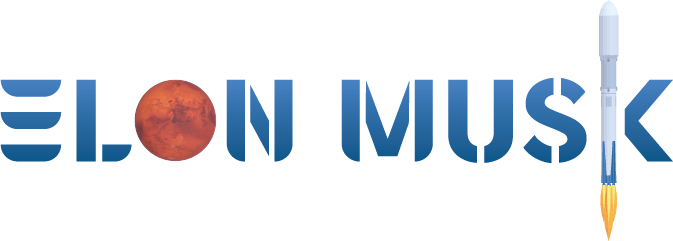
NASA’s Hubble Space Telescope Marks 35 Years from Launch | Scientific American
- by Scientific American
- Apr 24, 2025
- 0 Comments
- 0 Likes Flag 0 Of 5

Additional shuttle missions in 1997, 1999, 2002 and 2009 also visited the observatory, extending its lifetime and expanding its view each time with new hardware and better instruments.
The galaxy NGC 1566 is located about 60 million light-years from Earth in the constellation Dorado. NGC 1566 is what scientists call a weakly barred or intermediate spiral galaxy and belongs to a group of gravitationally bound galaxies that astronomers are still working to understand.
ESA/Hubble & NASA, D. Calzetti and the LEGUS team, R. Chandar (CC BY 4.0)
The results have been nothing short of breathtaking. Hubble’s position well above most of Earth’s atmosphere allows it to see the cosmos unhindered by the tempests and turbulence that all ground-based observatories face. That privileged vantage point has profoundly shaped our understanding of the solar system and universe around us.
In our own neighborhood, Hubble has studied the changing weather on the outer planets, discovered moons orbiting Pluto and watched the once-in-a-lifetime impact of Comet Shoemaker-Levy 9 on Jupiter scar the giant planet with dark spots as big as Earth. It has even glimpsed the sun, in a feat it was most definitely not designed to attempt.
Hubble used its ultraviolet vision to capture an image of auroras on Jupiter in 2016 as NASA’s Juno spacecraft was arriving in orbit around the massive planet.
NASA/ESA/J. Nichols/University of Leicester (image); A. Simon/NASA/GSFC/OPAL team (acknowledgment) (CC BY 4.0)
In more distant reaches, Hubble provided conclusive proof that supermassive black holes exist and made the first observations of astronomical objects colliding as well as of the surface of a star besides our sun. And in a remarkable triumph, it managed to capture a first-of-its-kind snapshot of a supernova explosion that had been successfully predicted by astronomers.
The dense globular cluster ESO 520-21, or Palomar 6 (top), is located near the center of the Milky Way in the constellation Ophiuchus. The Carina Nebula (bottom) is a star-forming region located about 7,500 light-years away from Earth in the constellation Carina. The pillar of dust and gas seen in this image stretches about three light-years tall and is being eroded away by radiation from hot newborn stars embedded in the column.
ESA/Hubble and NASA, R. Cohen (CC BY 4.0) (top); NASA, ESA, M. Livio and the Hubble 20th Anniversary Team (STScI) (CC BY 4.0) (bottom)
And, of course, it has taken some of the most iconic space photographs we have—among them, the stunning “Pillars of Creation” image of a stellar nursery known as the Eagle Nebula.
For 35 years Hubble has pushed the boundaries of possibility, transforming our view of the cosmos each time it beams the universe’s light down to Earth. How long it will continue to do so, however, remains unclear. Since the 2009 servicing mission, the NASA shuttles that ferried astronauts to Hubble retired, and the hazards of space have taken their toll. Hubble’s hardware failures are mounting, and the observatory’s ongoing operations depend on an ever-increasing number of workarounds and improvisations. At this point, even the most optimistic “Hubble hugger” astronomers admit that the observatory’s days are numbered.
Although Hubble is most known for its iconic photographs, it gathers other observations as well, such as this single exposure taken by the observatory’s Space Telescope Imaging Spectrograph. The image maps gas zipping around the supermassive black hole at the center of the galaxy M84, located about 50 million light-years away from Earth. From the spectrograph’s data, which show that the gas is moving as fast as 880,000 miles per hour, astronomers determined that the black hole contains at least 300 million times the mass of our sun.
NASA, Gary Bower, Richard Green (NOAO), the STIS Instrument Definition Team
In June 2024 NASA announced that failing machinery was forcing the observatory to begin operating with only one fully functional gyroscope, which slows the telescope’s work. In addition, Earth’s atmosphere is slowly but surely pulling Hubble down to Earth, bringing the observatory ever closer to fiery destruction, although reentry is not expected until next decade.
NASA launched Hubble’s successor, the James Webb Space Telescope, in 2021, although unlike Hubble, JWST is stationed so far beyond Earth’s orbit that crewed servicing missions are too daunting to attempt. The two telescopes mostly collect data independently of each other but occasionally team up, combining their powers to produce spectacular results.
NGC 1999, located about 1,350 light-years away from Earth, is a reflection nebula created by debris from the newborn star V380 Orionis, visible at the center of the image. The image relies on data gathered by Hubble’s Wide Field Planetary Camera 2—the replacement camera installed during the first servicing mission—in 1999.
Please first to comment
Related Post
Stay Connected
Tweets by elonmuskTo get the latest tweets please make sure you are logged in on X on this browser.






 Energy
Energy


















